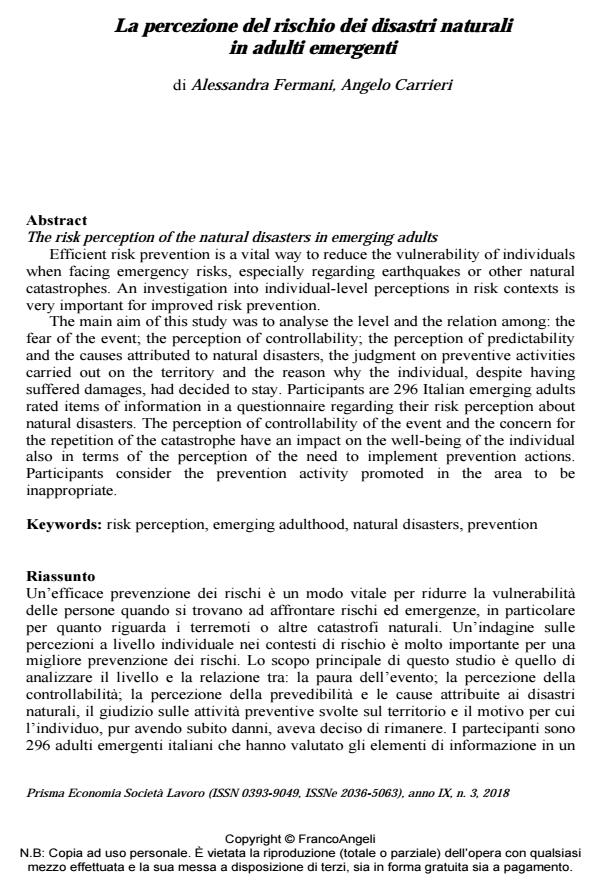The risk perception of the natural disasters in emerging adults
Journal title PRISMA Economia - Società - Lavoro
Author/s Alessandra Fermani, Angelo Carrieri
Publishing Year 2019 Issue 2018/3
Language Italian Pages 16 P. 81-96 File size 242 KB
DOI 10.3280/PRI2018-003006
DOI is like a bar code for intellectual property: to have more infomation
click here
Below, you can see the article first page
If you want to buy this article in PDF format, you can do it, following the instructions to buy download credits

FrancoAngeli is member of Publishers International Linking Association, Inc (PILA), a not-for-profit association which run the CrossRef service enabling links to and from online scholarly content.
Efficient risk prevention is a vital way to reduce the vulnerability of individuals when facing emergency risks, especially regarding earthquakes or other natural catastrophes. An investigation into individual-level perceptions in risk contexts is very important for improved risk prevention. The main aim of this study was to analyse the level and the relation among: the fear of the event; the perception of controllability; the perception of predictability and the causes attributed to natural disasters, the judgment on preventive activities carried out on the territory and the reason why the individual, despite having suffered damages, had decided to stay. Participants are 296 Italian emerging adults rated items of information in a questionnaire regarding their risk perception about natural disasters. The perception of controllability of the event and the concern for the repetition of the catastrophe have an impact on the well-being of the individual also in terms of the perception of the need to implement prevention actions. Participants consider the prevention activity promoted in the area to be inappropriate.
Keywords: Risk perception, emerging adulthood, natural disasters, prevention
Alessandra Fermani, Angelo Carrieri, La percezione del rischio dei disastri naturali in adulti emergenti in "PRISMA Economia - Società - Lavoro" 3/2018, pp 81-96, DOI: 10.3280/PRI2018-003006